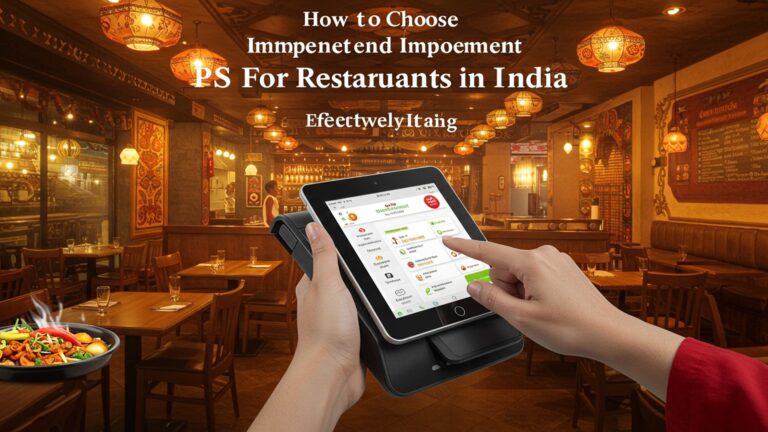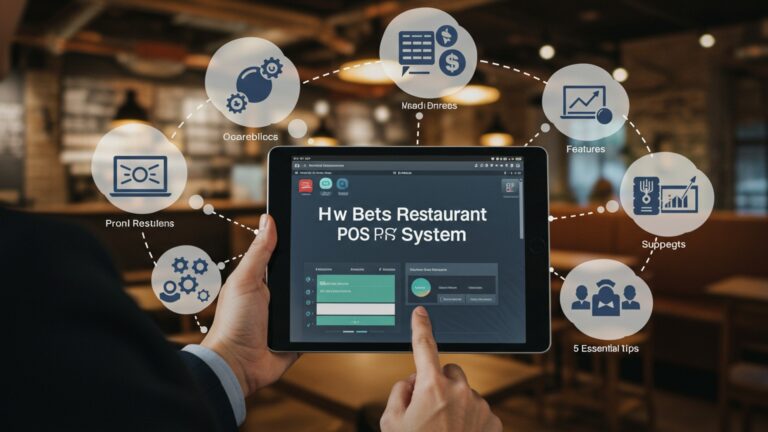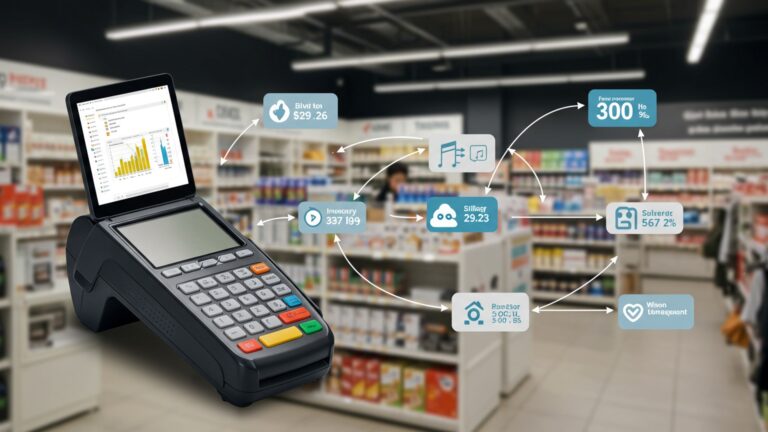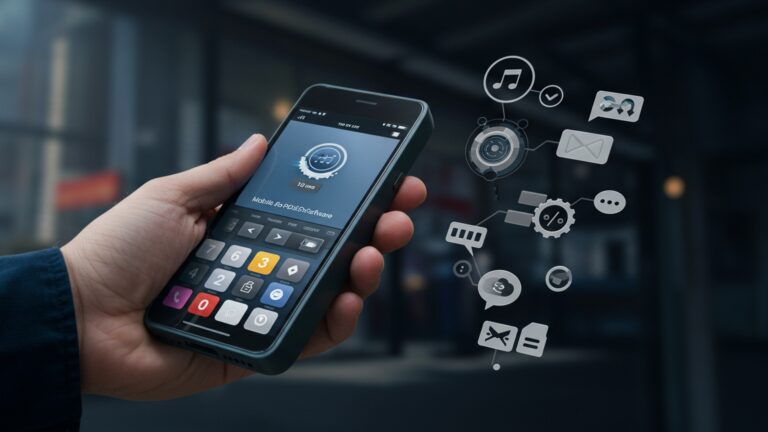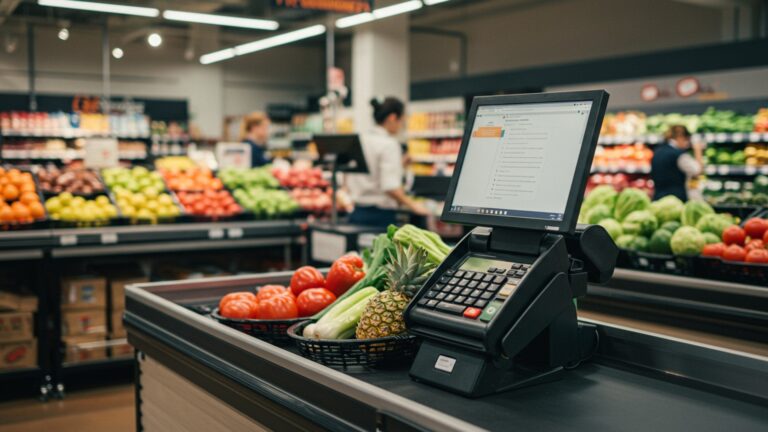How to Select the Perfect POS Software for Your Retail Store
The modern retail landscape demands more than just basic transaction processing; today’s pos software for retail serves as the central nervous system, orchestrating everything from real-time inventory and customer relationship management (CRM) to sophisticated omnichannel experiences. With the rapid evolution of contactless payments and the integration of AI-driven analytics, a robust system now provides critical sales data, streamlines returns. powers personalized loyalty programs. Selecting the ideal platform requires understanding how these advanced capabilities integrate to optimize operations, enhance customer engagement. ultimately drive growth. An informed choice moves beyond simple transactions, leveraging every interaction for strategic advantage in an increasingly competitive market.
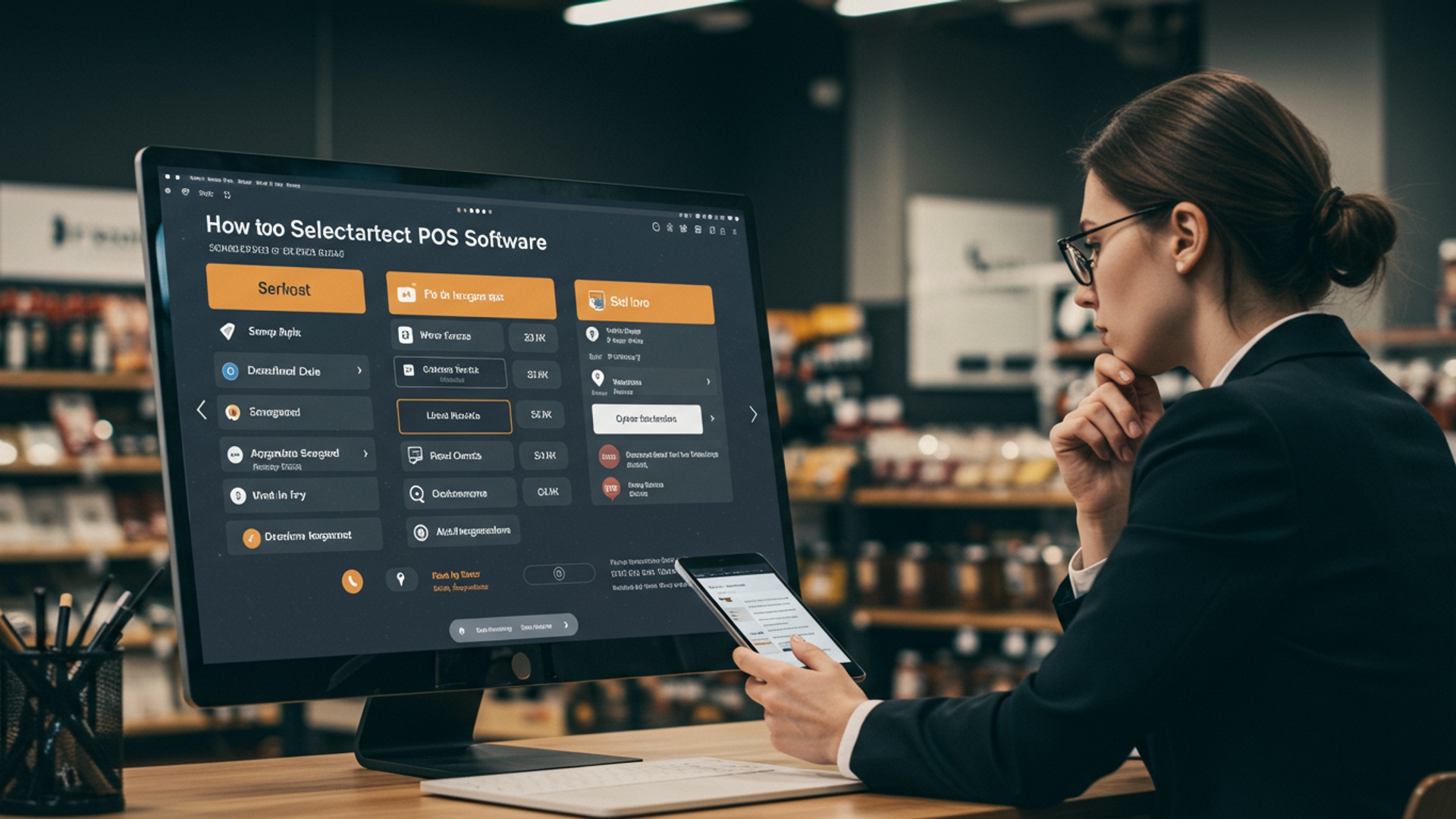
Understanding POS Software for Retail: More Than Just a Cash Register
In the bustling world of retail, the term “Point of Sale” (POS) often conjures images of a simple cash register. But, modern pos software for retail has evolved into a sophisticated, indispensable tool that drives efficiency, enhances customer experience. provides critical business intelligence. At its core, POS software is the central hub where transactions occur. its capabilities extend far beyond simply processing payments. It integrates various aspects of your retail operations, from inventory management to customer relationship tracking.
Historically, POS systems were standalone machines, often clunky and expensive, primarily focused on recording sales. Today, with the advent of cloud computing and mobile technology, POS solutions are dynamic, flexible. accessible, catering to the diverse needs of small boutiques, multi-location chains. everything in between. They are designed to streamline operations, reduce manual errors. provide real-time data that empowers retailers to make informed decisions. Essentially, it’s the brain of your retail store, coordinating sales, inventory, customer data. sometimes even staff management.
Key Features Every Retail POS Software Should Offer
When evaluating pos software for retail, a robust feature set is paramount. The right software should not only handle daily transactions but also support strategic growth. Here are the essential functionalities to look for:
- Sales Processing & Transaction Management
- Intuitive Interface
- Payment Flexibility
- Returns & Exchanges
- Discounts & Promotions
- Inventory Management
- Real-time Tracking
- Product Management
- Vendor Management
- Inventory Adjustments
- Customer Relationship Management (CRM)
- Customer Database
- Loyalty Programs
- Marketing Tools
- Employee Management
- User Permissions
- Time Clock
- Sales Performance Tracking
- Reporting & Analytics
- Sales Reports
- Inventory Reports
- Customer Reports
- Customizable Dashboards
- Integrations
- eCommerce Integration
- Accounting Software Integration
- Third-Party Apps
- Security & Compliance
- PCI Compliance
- Data Encryption
- Backup & Recovery
Easy for staff to learn and use, minimizing training time and errors.
Support for various payment methods (cash, credit/debit cards, mobile payments, gift cards, loyalty points) and integration with EMV-compliant terminals.
Streamlined process for handling returns, refunds. exchanges, including partial returns.
Ability to apply various discounts, coupons. promotional offers at checkout.
Accurate, up-to-the-minute visibility into stock levels across all locations.
Easy addition, editing. categorization of products, including variations (size, color) and SKUs.
Tracking supplier insights, purchase orders. receiving inventory.
Tools for managing stock takes, transfers between stores. inventory write-offs.
Store customer contact data, purchase history. preferences.
Ability to create and manage loyalty points, rewards. VIP programs to encourage repeat business.
Integration with email marketing platforms or built-in features for targeted customer communication.
Assign different access levels to staff members based on their roles.
Track employee clock-in/out times and work hours.
Monitor individual employee sales, commissions. performance metrics.
Detailed insights into sales by product, category, employee. time period.
Identify best-selling items, slow-moving stock. reorder points.
grasp customer demographics, purchasing habits. loyalty.
Visual summaries of key performance indicators (KPIs) relevant to your business.
Seamlessly sync online and in-store inventory, sales. customer data.
Connect with platforms like QuickBooks or Xero to simplify bookkeeping and financial reporting.
Compatibility with other essential business tools (e. g. , email marketing, shipping, payroll).
Ensure secure handling of credit card data.
Protect sensitive customer and business data.
Robust systems to prevent data loss.
Deployment Options: Cloud-Based vs. On-Premise POS Software
One of the foundational decisions when choosing pos software for retail is whether to opt for a cloud-based or on-premise solution. Each has distinct advantages and disadvantages that cater to different business models and preferences.
Cloud-based POS systems, also known as Software-as-a-Service (SaaS), host data and software on remote servers accessible via the internet. On-premise systems, conversely, are installed and run directly on your store’s own computers and servers.
| Feature | Cloud-Based POS | On-Premise POS |
|---|---|---|
| Accessibility | Access from anywhere with internet, on multiple devices (tablets, smartphones). Ideal for multi-store or mobile retail. | Limited to local network; access outside the store often requires complex VPN setups. |
| Cost Structure | Subscription-based (monthly/annual fees). Lower upfront cost, predictable operating expenses. | Higher upfront cost (software license, servers, installation). Potentially lower long-term costs if hardware lasts. |
| Maintenance & Updates | Provider handles all software updates, maintenance. security patches automatically. | Requires internal IT staff or external contractors for updates, maintenance. troubleshooting. |
| Data Security | Managed by provider; typically robust, enterprise-grade security. relies on internet connection. | Managed by the retailer; full control over data. responsibility for security falls on the business. |
| Scalability | Easily scalable; add new users, locations, or features as needed with subscription adjustments. | Scalability can be complex and expensive, often requiring hardware upgrades. |
| Offline Capability | Some offer limited offline mode, syncing when connection returns; full functionality requires internet. | Fully functional even without internet access, as long as local hardware is running. |
For most modern retailers, especially those with an online presence or multiple locations, cloud-based pos software for retail often provides greater flexibility, lower initial investment. reduced IT overhead. But, businesses with specific security compliance needs or unreliable internet access might lean towards an on-premise solution.
Factors to Consider Before Making a Decision
Selecting the ideal pos software for retail requires a thoughtful assessment of your specific business context. Beyond features, several critical factors will influence your choice:
- Your Business Needs & Size
- Small Boutiques/Single Stores
- Multi-Location Retailers
- Specialty Stores (e. g. , Apparel, Grocery, Restaurants)
- High-Volume Retailers
- Budget
- Upfront Costs
- Ongoing Costs
- Scalability
- Ease of Use & Training
- Customer Support
- Hardware Compatibility
- Security & Compliance
Might prioritize ease of use, affordability. basic inventory/sales. Solutions like Square or Shopify POS are popular.
Need robust multi-store inventory management, centralized reporting. seamless data synchronization.
Often require industry-specific features like matrix inventory (for sizes/colors), ingredient tracking, or table management.
Demand speed, reliability. powerful reporting capabilities to handle large transaction volumes efficiently.
Consider hardware purchases (terminals, scanners, receipt printers, cash drawers), software licensing fees (for on-premise). installation.
Monthly/annual subscription fees (for cloud-based), payment processing fees, maintenance contracts. potential upgrade costs. Always ask for a transparent breakdown of all potential expenses.
Will the software grow with your business? If you plan to open more stores, expand product lines, or integrate an e-commerce platform, ensure your chosen POS can handle this expansion without requiring a complete system overhaul. A scalable pos software for retail saves significant time and money in the long run.
An intuitive interface reduces staff training time and minimizes errors. A complex system, no matter how feature-rich, can lead to frustration and inefficiency. Look for systems with clear navigation, logical workflows. readily available training resources (tutorials, videos).
When issues arise, prompt and effective support is crucial. Evaluate the vendor’s support options: 24/7 availability, phone, email, live chat, self-service knowledge base. Consider their response times and reputation for customer service.
Check if the software is compatible with your existing hardware or if you’ll need to purchase new equipment. Some systems are hardware-agnostic, while others are tied to proprietary hardware. This can significantly impact your overall cost.
Protecting customer data and maintaining PCI compliance is non-negotiable. Ensure the POS vendor has robust security measures in place, including data encryption and regular security audits. Ask about their data backup and recovery protocols.
The Implementation Process: What to Expect
Once you’ve selected your pos software for retail, the implementation phase is critical for a smooth transition. While specific steps vary by vendor and system complexity, a general roadmap includes:
- Data Migration
- Hardware Setup
- Staff Training
- Go-Live & Post-Implementation Support
This is often the most time-consuming step. It involves transferring your existing product catalog, customer database, vendor insights. historical sales data into the new POS system. Ensure data accuracy and integrity during this process. Many vendors offer tools or services to assist with this. it often requires careful preparation on your part.
Installing and configuring physical hardware like POS terminals, barcode scanners, receipt printers. cash drawers. For cloud-based systems, this often involves simple plug-and-play, while on-premise solutions might require more technical setup.
Comprehensive training for all employees who will interact with the system is vital. This should cover daily operations (processing sales, returns), inventory management tasks. basic troubleshooting. Role-specific training ensures everyone understands their responsibilities within the new system. Consider creating cheat sheets or quick reference guides.
The transition day requires extra vigilance. Have key staff members (and ideally, vendor support) on standby to address any immediate issues. Post-launch, continue to monitor performance, gather feedback from staff. leverage ongoing support from your vendor to iron out any kinks.
Real-World Scenarios and Case Studies
Understanding how different retail businesses leverage pos software for retail can illustrate its transformative power:
- Case Study 1: The Independent Fashion Boutique (“Style Haven”)
Style Haven, a small boutique with a curated selection of apparel and accessories, struggled with manual inventory tracking and limited customer insights. They adopted a cloud-based POS system known for its intuitive interface and strong inventory features. Within months, they saw:
- Reduced Stockouts
- Improved Customer Engagement
- Efficient Pop-Up Shops
Real-time inventory prevented over-selling popular items. automated reorder alerts streamlined purchasing.
Building customer profiles and offering a simple loyalty program helped them send targeted promotions, increasing repeat visits by 15%.
The mobile POS app allowed them to easily set up pop-up shops at local markets, processing sales and managing inventory on the go.
- Case Study 2: The Multi-Location Specialty Food Store (“Gourmet Grocer”)
Gourmet Grocer operates three locations across a city, offering artisanal foods. Their previous system lacked centralized inventory and reporting, leading to inconsistent stock levels and difficulty analyzing overall business performance. They implemented a robust
pos software for retail designed for multi-store operations with strong accounting integrations.- Centralized Control
- Enhanced Reporting
- Streamlined Accounting
All inventory and sales data flowed into a single dashboard, providing a holistic view of the business. Managers could easily transfer stock between stores based on demand.
Detailed sales analytics helped them identify top-performing products across all locations and optimize pricing strategies.
Direct integration with their accounting software drastically reduced manual data entry and reconciliation errors, saving hours of administrative work each week.
Avoiding Common Pitfalls
Even with careful planning, selecting and implementing pos software for retail can present challenges. Being aware of common pitfalls can help you navigate the process more smoothly:
- Underestimating Training Needs
- Ignoring Scalability
- Overlooking Hardware Compatibility
- Neglecting Customer Support Quality
- Not Testing Thoroughly
- Forgetting About Integration
Don’t assume your staff will pick up the new system instantly. Allocate sufficient time and resources for comprehensive, hands-on training to ensure smooth adoption.
Choosing a system that only meets current needs, without considering future growth, can lead to costly migrations down the line. Always think a few years ahead.
Failing to verify if your existing hardware (barcode scanners, printers) is compatible can result in unexpected expenses for new equipment.
A low-cost solution with poor support can become expensive in terms of lost sales and operational disruptions when problems arise. Prioritize vendors with reliable support.
Before going live, conduct extensive testing of all key functions, including sales, returns, discounts. inventory adjustments, using real-world scenarios.
A standalone POS is rarely enough. Ensure it integrates seamlessly with your e-commerce platform, accounting software. any other critical business tools to avoid data silos and manual data entry.
Actionable Steps for Selecting Your Perfect POS Software
To ensure you make an informed decision when choosing pos software for retail, follow these actionable steps:
- Define Your Requirements
- List all “must-have” features (e. g. , inventory management, customer loyalty, multi-store).
- Identify “nice-to-have” features.
- Determine your budget range (upfront and recurring).
- Assess your current hardware and integration needs.
- Research and Shortlist Vendors
- Look for POS systems specifically designed for retail. if applicable, for your niche (e. g. , fashion, grocery).
- Read reviews from reputable sources (e. g. , Capterra, G2, Software Advice).
- Ask for recommendations from other retailers in your industry.
- Create a shortlist of 3-5 potential vendors.
- Request Demos and Free Trials
- Schedule personalized demos with each shortlisted vendor, focusing on how their system addresses your specific needs.
- Utilize free trials (if available) to get hands-on experience with the software. Test core functionalities with your own products and scenarios.
- Check for Integrations and Compatibility
- Verify that the POS integrates with your existing e-commerce platform, accounting software. payment processor.
- Confirm hardware compatibility.
- Evaluate Support and Training
- Inquire about their support channels, hours. response times.
- Ask about available training resources (documentation, videos, live sessions).
- Review Pricing and Contracts
- Get a detailed quote that includes all costs: software, hardware, processing fees, support. potential add-ons.
- comprehend contract terms, cancellation policies. data ownership.
- Make Your Decision and Plan Implementation
- Weigh all factors and choose the system that best aligns with your business goals and budget.
- Work with the vendor to create a detailed implementation plan, including data migration, training. go-live strategy.
Conclusion
You’ve embarked on a crucial journey to revolutionize your retail operations, understanding that selecting the perfect POS software is far more than just picking a cash register. My personal tip, refined from years observing diverse retail setups, is to prioritize scalability and ease of integration. Don’t just look at today’s needs; consider where your store, perhaps a growing fashion boutique or a multi-location electronics store, will be in three to five years. The rise of cloud-based POS solutions, like those integrating seamlessly with e-commerce platforms, is a current trend demanding attention, ensuring you’re ready for omnichannel retail. Remember, the goal isn’t just to process transactions; it’s to gain actionable insights into your inventory, customer behavior. sales performance, turning data into profit. Take the time to demo a few top contenders, focusing on how intuitive the interface feels for your team and its robust reporting capabilities. As I’ve witnessed with many successful businesses, the right choice empowers you to streamline operations, reduce manual errors. elevate the customer experience from good to exceptional. Embrace this decision as an investment in your store’s future, not just an expense. The perfect POS software awaits, ready to transform your retail vision into a thriving reality.
More Articles
How to Maximize Retail Sales With Powerful POS Software
Mastering POS Software How to Optimize Business Operations for Efficiency
How to Choose the Best POS Software in India A Comprehensive Guide
Maximize Profit Learn 7 Smart Inventory Management Strategies for Indian POS
7 Essential POS Software Features for Indian Clothing Stores
FAQs
I’m new to this. How do I even begin looking for POS software?
Start by identifying your store’s unique needs. What kind of retail do you run? What pain points are you trying to solve? Do you absolutely need strong inventory tracking, customer management, or employee scheduling? Make a ‘must-have’ list before you dive into comparing options.
What are the absolute essential features a good POS system should have?
At its core, a solid POS needs robust sales processing, comprehensive inventory management, customer relationship management (CRM). insightful reporting. Don’t forget seamless integration with your preferred payment processors. Beyond that, consider if you need things like employee management, multi-store support, or e-commerce integration.
Should I go for cloud-based or an on-premise POS system?
Cloud-based systems are generally more flexible, accessible from anywhere with an internet connection. often have lower upfront costs with automatic updates. On-premise gives you more direct control over your data and hardware but requires more IT maintenance and a higher initial investment. For most modern retailers, cloud is the more popular and often more convenient choice.
How much should I expect to pay for decent POS software?
Costs can vary a lot based on features, the number of users or registers. any included hardware. You’ll typically encounter monthly subscription fees for the software, plus potential costs for hardware like barcode scanners or receipt printers. payment processing fees. Always get clear quotes and comprehend all potential costs before committing.
Is it really essential for the software to be super easy to use?
Absolutely! An intuitive interface means less training time for your staff, fewer errors during transactions. a smoother customer experience. If your team struggles with the software, it slows down your operations and can lead to frustration. Always ask for a demo or a free trial to test it out yourself.
My business might grow. Can a POS system grow with me?
Yes, scalability is crucial! Look for systems that can easily accommodate more registers, support additional locations, or handle increased inventory and customer data without requiring a complete system overhaul. Many cloud-based solutions are designed with scalability in mind, offering different plans as your business expands.
What about customer support and connecting it with my other tools?
Good customer support is a lifesaver when issues pop up. Check their support hours, expected response times. available channels (phone, email, chat). Equally essential, ensure the POS can integrate with other essential tools you already use, like your accounting software (e. g. , QuickBooks), e-commerce platform (e. g. , Shopify), or marketing tools. This prevents manual data entry and keeps your entire business running smoothly.

